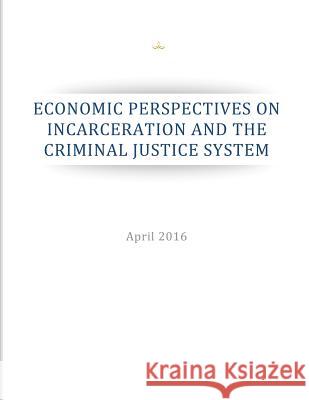Economic Perspectives on Incarceration and the Criminal Justice System » książka
Economic Perspectives on Incarceration and the Criminal Justice System
ISBN-13: 9781537385297 / Angielski / Miękka / 2016 / 80 str.
Economic Perspectives on Incarceration and the Criminal Justice System
ISBN-13: 9781537385297 / Angielski / Miękka / 2016 / 80 str.
(netto: 56,98 VAT: 5%)
Najniższa cena z 30 dni: 60,00
ok. 16-18 dni roboczych
Bez gwarancji dostawy przed świętami
Darmowa dostawa!
Calls for criminal justice reform have been mounting in recent years, in large part due to the extraordinarily high levels of incarceration in the United States. Today, the incarcerated population is 4.5 times larger than in 1980, with approximately 2.2 million people in the United States behind bars, including individuals in Federal and State prisons as well as local jails. The push for reform comes from many angles, from the high financial cost of maintaining current levels of incarceration to the humanitarian consequences of detaining more individuals than any other country. Economic analysis is a useful lens for understanding the costs, benefits, and consequences of incarceration and other criminal justice policies. In this report, we first examine historical growth in criminal justice enforcement and incarceration along with its causes. We then develop a general framework for evaluating criminal justice policy, weighing its crime-reducing benefits against its direct government costs and indirect costs for individuals, families, and communities. Finally, we describe the Administration's holistic approach to criminal justice reform through policies that impact the community, the cell block, and the courtroom.
Zawartość książki może nie spełniać oczekiwań – reklamacje nie obejmują treści, która mogła nie być redakcyjnie ani merytorycznie opracowana.











